One of the largest areas of innovation within solar involves the mounting system. Probably the most competitive solar product market (our annual Top Solar Mounting Products list is stacked, and it’s still just a drop in the bucket), mounting systems are an important element of solar arrays—they secure solar panels to the roof or the ground. Here we go over the basics categories of ground-mounted solar systems to help new installers get a grasp on installation processes. We explore the different roof-mounted systems (including rail-less and ballasted systems) in another must-read article.
Traditional ground-mount systems
Ground-mounted solar systems essentially all work the same—systems anchor to the ground and hold a large number of stacked panels, often two but sometimes three or four panels high. Two rails usually support each panel, whether oriented in landscape or portrait. The anchoring to the ground is the tough part of these installations, as there are many different types of foundations.
If the soil is clear of debris, steel beams are driven into the ground and the racking system is attached to the beams. If ground conditions are not suited for smoothly driven beams, anchor systems may be used—helical piles, ground screws. These can take more time to install as they have to power through boulders and other large debris.
Ground-mounted systems don’t always have to penetrate into the earth. Capped landfills and other brownfields are ideal for solar arrays, as they are underused land areas, but their temperamental ground conditions cannot be disturbed. Arrays can be ballasted on the ground just as they are on flat roofs. Concrete blocks hold a system in place, and if ground conditions can hold the weight of a concrete truck, cast-in-place blocks may be an easier option for installers.
Tracking systems
To improve energy output, developers and installers turn to tracking systems. These motorized ground-mounts track the sun throughout the day, ensuring the panels are facing the sun at all times. Panels are attached to similar racking tables as traditional ground-mounts, usually bolted or clamped into place, but there are different types of tracking systems.
The two main classifications of tracking systems are single-axis and dual-axis. Single-axis tracking systems span panels on long rows, following the sun from east to west. Dual-axis tracking systems separate out tables of panels and follow the sun on a more circular path for the best energy output.
Tracking systems have two motor distinctions. Centralized trackers move many rows of panels with a single motor. Distributed trackers use one motor per row or table of panels. Centralized systems use fewer motors while distributed systems use many.
Carports and canopies
Solar carports and canopies can be looked at as really, really tall ground-mounts. They are very common in commercial settings, especially at schools and business campuses. Reinforced concrete foundations hold large steel beams that support solar panels overhead. Carports can be designed to cover one row of parking spots, span over two rows or be as large as a project needs. Many carports can be equipped with electric vehicle charging stations for an extra bonus to cars sheltering underneath.
Floating solar systems
Floatovoltaics—a solar array that floats on water—has really taken off in Asia and parts of Europe, and it’s beginning to find its way to the United States. Many reservoirs and water treatment facilities can benefit from leasing their water surfaces to solar developers. Although not really anchored to the ground, floating solar arrays still borrow characteristics of ground-mounted solar.
Floating systems are made of a type of plastic that link together into a mat. Each individual float is molded into a tilted design, so panels are positioned at a similar degree as systems on a flat roof. Floating systems can often be assembled on land and then pushed out onto the water as more panels are added. The system is either secured to shore mounts or floating anchors.
View Solar Power World’s database of solar racking and mounting models.
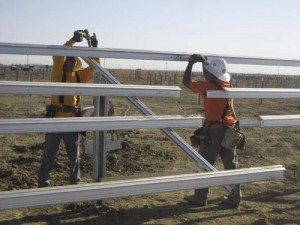
A traditional ground-mount system. Courtesy of Schletter
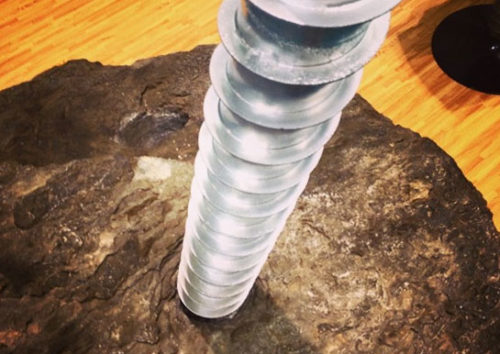
A ground screw. Courtesy of TerraSmart
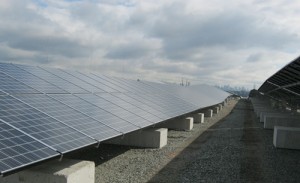
A ballasted ground-mount. Courtesy of Solar FlexRack
A single-axis tracker. Courtesy of Array Technologies
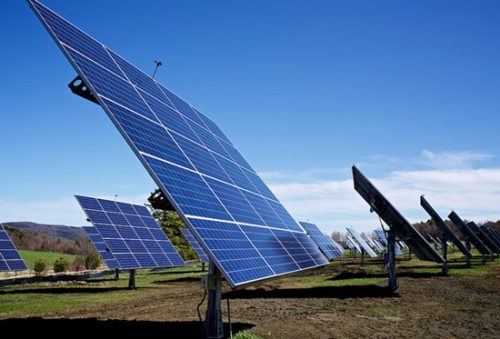
A dual-axis tracker. Courtesy of AllEarth Solar
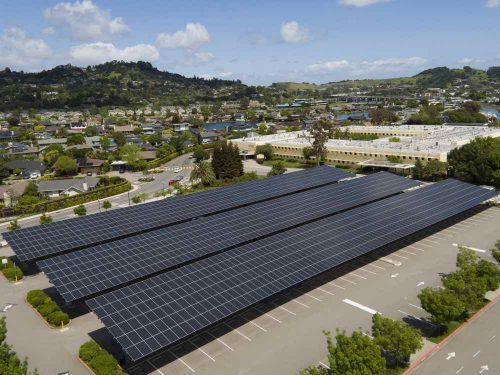
A solar carport. Courtesy of SunPower
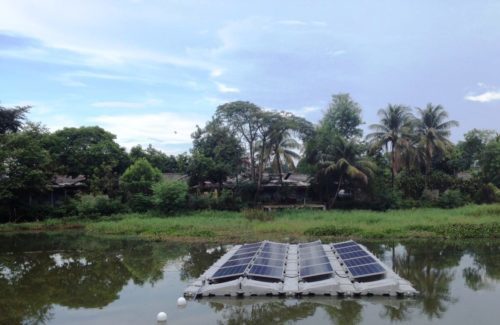
A floating solar array. Courtesy of REC





how can you fasten solar heating panels for a pool to a standing seam roof?
This is wonderful information and thank you Kelly. I’m curious, I have a 6 acre parcel in Northern California, am going to be building in 2-3 months, I am looking to determine where on the land would I place solar as I don’t want it on the house. Do you have a site or program you would recommend to help with placement, angle, etc? Thank you for your support.
I need information on how to install a 2 axis solar panel mast other than simply digging a deep, wide hole and filling it with concrete. Ideas included multiple footings tied together and supporting one central pole. Another might be a star-shaped footing that is shallow rather than deep. Please help.
Here are some foundation ideas: https://www.solarpowerworldonline.com/2020/03/there-are-solar-ground-mount-solutions-for-any-type-of-soil/
I live in PR and want to set up a solar system asap…at first thinking of the roof(s)..but now considering the ground.